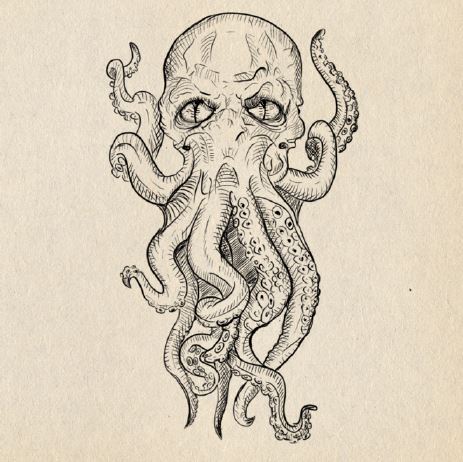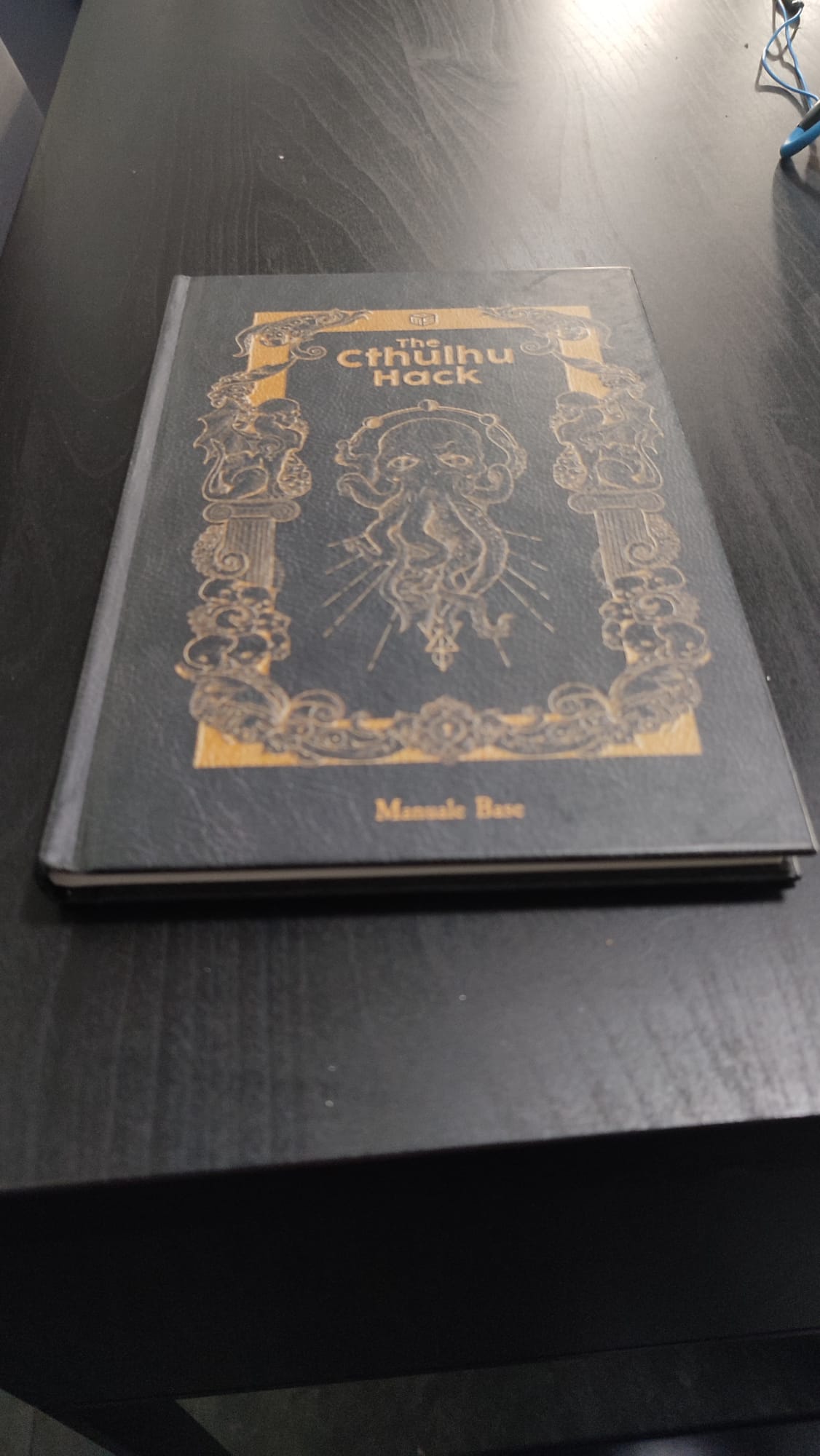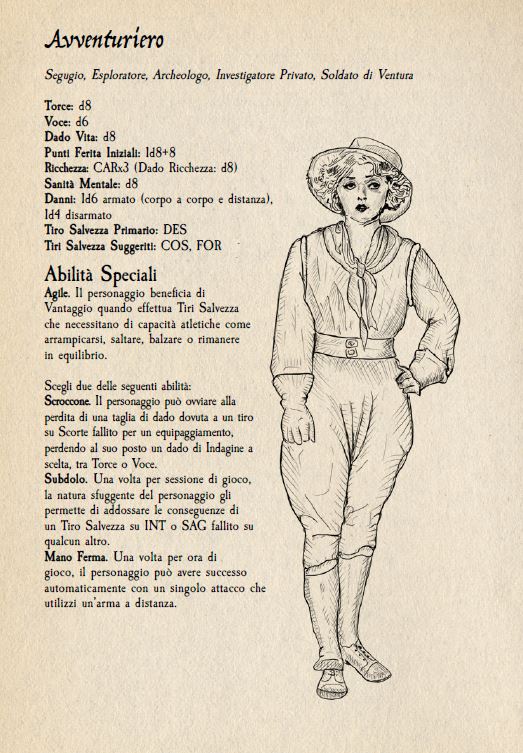Before starting this The Cthulhu Hack review, I want to thank MS Edizioni for sending us a physical copy so we can browse through it together.
The game (developed by Paul Baldowsky) is available on Drivethrurpg website at 18$ (about 18 euros) in the softcover edition plus the digital copy, or, if you want only the PDF, at the price of 8$, about 8 euros.

The Cthulhu Hack is an investigative game that makes characters, normal people, face monsters and gods created by the mind of H.P. Lovecraft, using The Black Hack‘s “old school” rules system.
Let’s start from the obvious premise that there are plenty of games based on cosmogony and Lovecraft’s stories. Why then choose The Cthulhu Hack instead of any other game with the same setting? Mainly, as we will see in this review, because the system is very immediate, the creation of characters is rapid and the sessions have an average duration of three hours.

The Cthulhu Hack mainly focuses on the narration of the story and the mystery, to be more precise. It is a about embarking on a journey that will most likely end in defeat or, in any case, with a large and heavy bill to settle.
The Horror under the Skin
As with any game based on the Cthulhu Mythos and the works of Lovecraft, the setting in The Cthulhu Hack should be the starting point. Similarly, it should be clear to those playing the game that the threat is well beyond human reach.
However, the part of the manual dedicated to setting is, in fact, the one that introduces the creatures of myth and the spells, taking for granted that whoever approaches the game already has experienced, if not of themed role-playing games, at least some elements of the Lovecraft’s short stories.


This section, which falls into the macro-category of game rules, introduces thirteen different creatures and twenty-four spells, presented as a concise list of a few lines describing the use and cost of each one.
The characters will often have to deal with frightening creatures far beyond their abilities and possibilities. They will therefore have to opt for strategies other than direct confrontation with the risk of seeing their expectations frustrated, at best. Much of the game then becomes the analysis and understanding of the motivations of the characters and their human and psychological development.
A Game System that Guides You Step by Step
The Cthulhu Hack, as we said at the beginning of this review, is based on The Black Hack game system. It actually has two types of rolls: Saving Throws and Resource Throws.


Saving Throws are made by rolling a d20 for one of six characteristics, the ine related to the test (such as jumping out a window without harming yourself or shooting an opponent). If the result is equal to or less than the characteristic value, the check is successful; otherwise, the master will define the type of consequence that will affect the character. In this sense, The Cthulhu Hack is therefore a rollunder system.

The Resource Throws, on the other hand, follow a completely different system, more modern and in line with the new productions of role-playing games. To each resource is assigned a 4, 6, 8, 10 or 12-sided die.
When a resource is used, the corresponding die is rolled and, if the result is a 1 or 2, the resource’s die size will decrease to the next smaller one. If, once you get to d4, a 1 or 2 rolls, that resource will be exhausted and you can no longer use it.
In my very personal opinion, this system risks creating a series of problems at the table by excessively linking the possibility of using or not using resources within the adventure to the randomness of the dice.
However, we must keep in mind that The Cthulhu Hack has a ruleset that can be learned in less than half an hour and which allows you to start playing actively in a short time,
Archetypes and Antagonists in The Cthulhu Hack
For the creation of characters, The Cthulhu Hack offers the possibility to start with the choice of an Archetype. The process is immediate and reduces preparation time, compared to other roleplaying-games. Each character has six stats to rely on: Strength, Dexterity, Constitution, Intelligence, Wisdom, and Charisma. For each characteristic, roll 3d6 and write the result. This value represents the saving throw associated with that characteristic.
In addition to the characteristics, the characters have resources to count on: hit points, money, voice, torches, and damage. The resources are determined, according to one’s taste and pleasure, by distributing 14 points.
The last element to be determined is the Special Ability, which can be selected from those in the manual.


As in all games based on the works of Lovecraft, even in The Cthulhu Hack Sanity is of considerable importance. In this case its management is relatively simple: every time the characters are faced with something horrible and inexplicable that could undermine their beliefs about reality, the players will have to roll the relative die. Each result equal to or less than 2 will cause the dice size to decrease and will produce effects of temporary madness, until the complete loss of sanity.
Saving Innsmouth
In the last part of The Cthulhu Hack manual you find an adventure: Saving Innsmouth. The plot was conceived by Baldowski as the incipit of a wider campaign. However, it has some of the fundamental elements of Lovecraft’s works and can serve as the first taste for those who want to deepen and continue with slightly more substantial topics.
The structure is designed to be played in a single session but, with a few tweaks, it can be extended up to a maximum of two or three evenings. It is certainly a good starting point, especially for newcomers to the Lovecraftian world.


Review of The Cthulhu Hack Materials
The physical volume is bound with a hardcover and consists of 88 single-column formatted A5 pages. The brownish paper chosen for printing is particular and immediately conveys a taste of coherence with what will be played. All the illustrations enhance the text, which is proposed in an easily legible font even in the digital version; the art perfectly accompanies the paragraphs, leaving the impression of a notebook written by an adventurer struggling with an investigation.


Ilaria Gabaldo‘s art adapts well to the text and perfectly conveys the idea that one might have of a 1920s context; they also present a decidedly appropriate tone of mystery and esotericism.
The Cthulhu Hack Review Conclusion
The Cthulhu Hack, as can be seen from this review, is perhaps not the most complete of the games dedicated to the works of H.P. Lovecraft. Resource management linked to the randomness of the dice can be frustrating; the absence of a chapter totally dedicated to the setting makes it suitable for an alternative evening, especially if you don’t want to deal with the mechanical complexity of other games that use the same themes and the same world of reference.
It can however be a game to keep in one’s collection for various reasons, in addition to the immediacy; the monster table is useful for improvising new creatures when needed, for example. It is also advisable to introduce absolute beginners to an investigative and narrative game and make them experience the Lovecraftian atmosphere in a simpler way.

